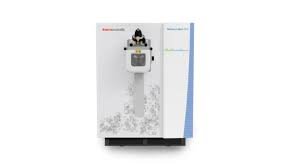Thursday, 13 November 2025
Scientists in US develop tool to detect food contamination
The team has designed a sensitive and reliable bacteria-detecting chip that can test whether fresh spinach or apple juice, for example, carry a bacterial load. Scientists at the University of…

The team has designed a sensitive and reliable bacteria-detecting chip that can test whether fresh spinach or apple juice, for example, carry a bacterial load.
Scientists at the University of Massachusetts Amherst have developed a new, rapid and low-cost method for detecting bacteria in water or a food sample. Once commercially available, it should be useful to cooks using fresh fruits and vegetables.
The team has designed a sensitive and reliable bacteria-detecting chip that can test whether fresh spinach or apple juice, for example, carry a bacterial load. The chip, used with a light microscope for optical detection, relies on a capture molecule, 3-mercaptophenylboronic acid (3-MBPA) that attracts and binds to any bacteria. The chemical detection method, surface-enhanced Raman spectroscopy (SERS), relies on silver nanoparticles. The techniques are now in the patenting process.
To address the food interference problem, the researchers have designed the UMass Amherst chip to attract only bacteria but not sugars, fats and proteins in food or dirt. The food compounds can be washed away with a high-pH buffer, leaving only bacteria for visual counting with the smart phone microscope and app. This method can detect as few as 100 bacteria cells per 1 milliliter of solution, compared to a sensitivity of 10,000 cells for other rapid methods.
Technology
Tetra Pak opens Product Development Centre in France
Nov 13, 2025 | Company News
MENU ORDER AI to launch app aimed at GLP-1 users and health-conscious diners
Nov 10, 2025 | Company News
Harnessing Quantum AI for Greener Minds and Healthier Futures
Nov 10, 2025 | Interaction
Food Testing
Intertek acquires Costa Rican testing business Suplilab
Nov 07, 2025 | Company News
Thermo Fisher Scientific launches Orbitrap mass detector for food safety testing
Oct 24, 2025 | Company News
ADM advances quality capabilities with opening of new Central Milling Laboratory
Oct 16, 2025 | Company News
More Popular
Syren Spreads launches spoonable adaptogenic beauty chocolate
Nov 13, 2025 | Company News
Gunpowder Irish Gin expands with new Italian Fig & Laurel Expression
Nov 13, 2025 | Beverages
8 winter foods that transform your skin by healing your gut first
Nov 13, 2025 | Beverages






